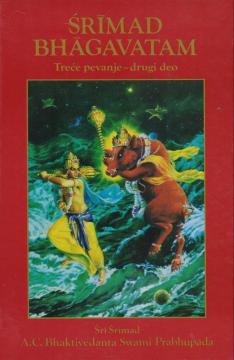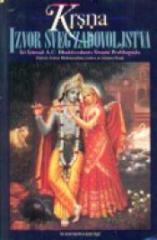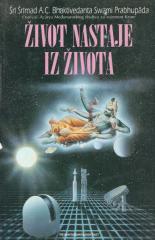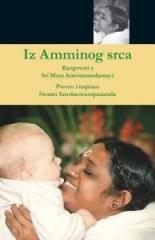
Srimad Bhagavatam: Treće pevanje, drugi deo
Srimad Bhagavatam, jedno od najvažnijih djela hinduističke književnosti, sastoji se od 12 pjevanja, a Treće pjevanje fokusira se na stvaranje kozmosa, kao i na filozofske rasprave o prirodi duše i Božanskog.
Glavne teme trećeg pjevanja: Stvaranje univerzuma: Detaljno se opisuje kako Bog Višnu, u svojoj formi Garbhodakašaji Višnua, stvara kozmos iz svog tijela i kako materijalni svijet nastaje iz njegovih energija. Ovaj dio je duboko povezan s hinduističkom kozmologijom i objašnjava proces stvaranja i uništenja univerzuma kroz različite cikluse.
Dijalog između Vidure i Maitreje: Vidura, mudrac i poštovalac Krišne, susreće mudraca Maitreju i postavlja pitanja o prirodi duhovnog i materijalnog svijeta. Maitreja odgovara na pitanja o stvaranju, održavanju i uništenju univerzuma, kao i o ulogama različitih inkarnacija Boga.
Kapila Muni i filozofija Sankhye: Kapila Muni, sin Devahuti i Kardame Munija, prenosi svojoj majci učenja o Sankhya filozofiji, koja je jedna od šest osnovnih filozofskih škola u hinduizmu. Učenja uključuju objašnjenje dualizma između materijalne (prakriti) i duhovne energije (purusha) i kako duhovna evolucija omogućava oslobođenje duše od ciklusa rođenja i smrti.
Priča o Kardami Muniju i Devahuti: Kardama Muni, kroz dugogodišnju meditaciju i pokoru, dobija blagoslov Boga Višnua da oženi Devahuti. Njihov sin, Kapila, postaje učitelj duhovnih istina. Ova priča se fokusira na balans između duhovnog i obiteljskog života, prikazujući kako oba mogu biti sredstva za duhovni napredak.
Treće pjevanje je važno zbog svog filozofskog bogatstva i objašnjava kako razumijevanje prirode duše, materijalnog sveta i Božanskog može dovesti do duhovnog oslobođenja (mokše).
Nema primjeraka u ponudi
Poslednji primjerak je nedavno prodan.





